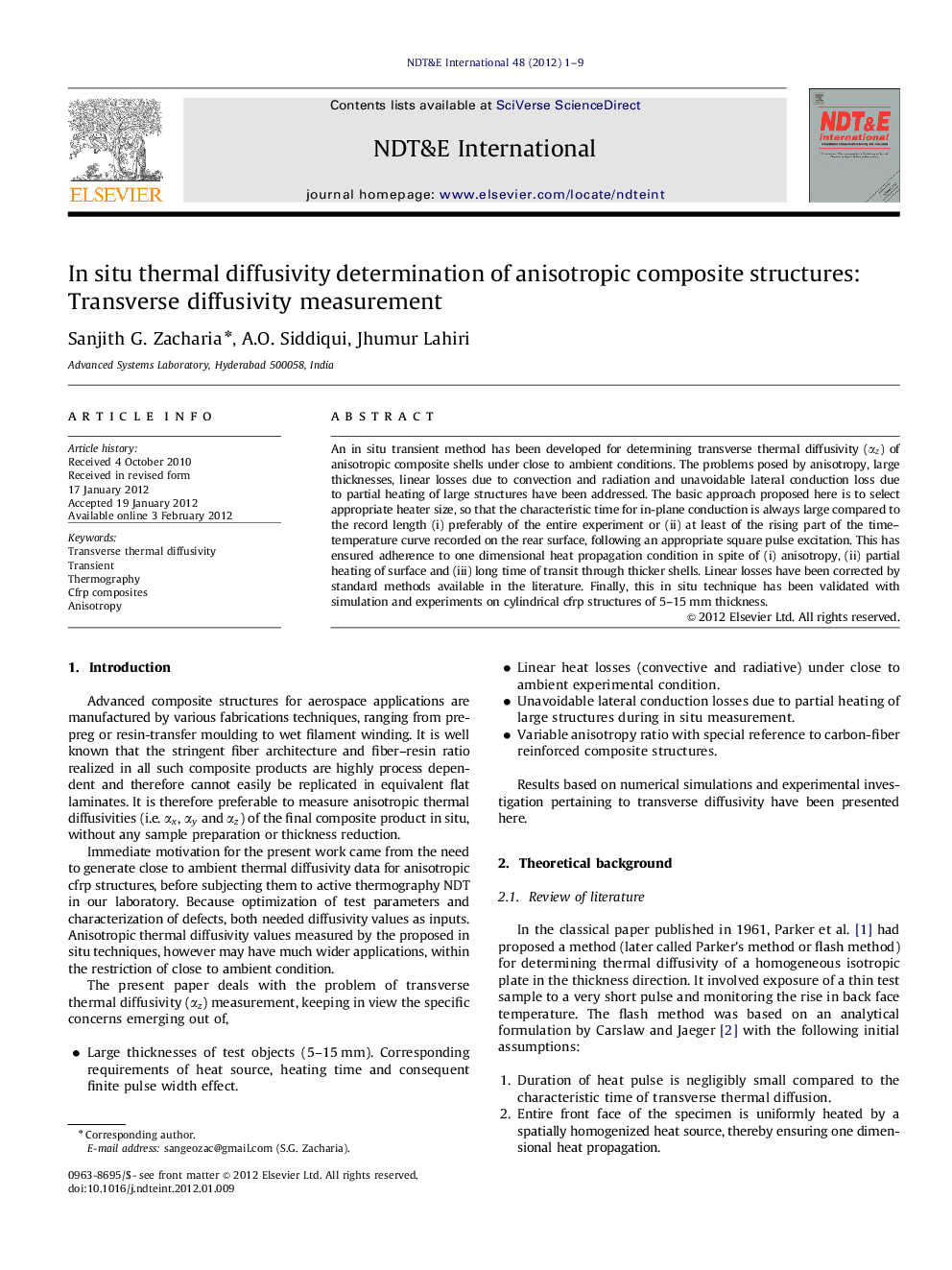| Article ID | Journal | Published Year | Pages | File Type |
|---|---|---|---|---|
| 295273 | NDT & E International | 2012 | 9 Pages |
An in situ transient method has been developed for determining transverse thermal diffusivity (αzαz) of anisotropic composite shells under close to ambient conditions. The problems posed by anisotropy, large thicknesses, linear losses due to convection and radiation and unavoidable lateral conduction loss due to partial heating of large structures have been addressed. The basic approach proposed here is to select appropriate heater size, so that the characteristic time for in-plane conduction is always large compared to the record length (i) preferably of the entire experiment or (ii) at least of the rising part of the time–temperature curve recorded on the rear surface, following an appropriate square pulse excitation. This has ensured adherence to one dimensional heat propagation condition in spite of (i) anisotropy, (ii) partial heating of surface and (iii) long time of transit through thicker shells. Linear losses have been corrected by standard methods available in the literature. Finally, this in situ technique has been validated with simulation and experiments on cylindrical cfrp structures of 5–15 mm thickness.
